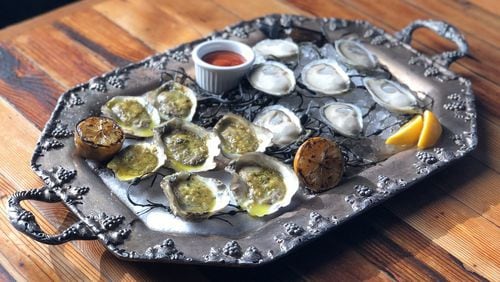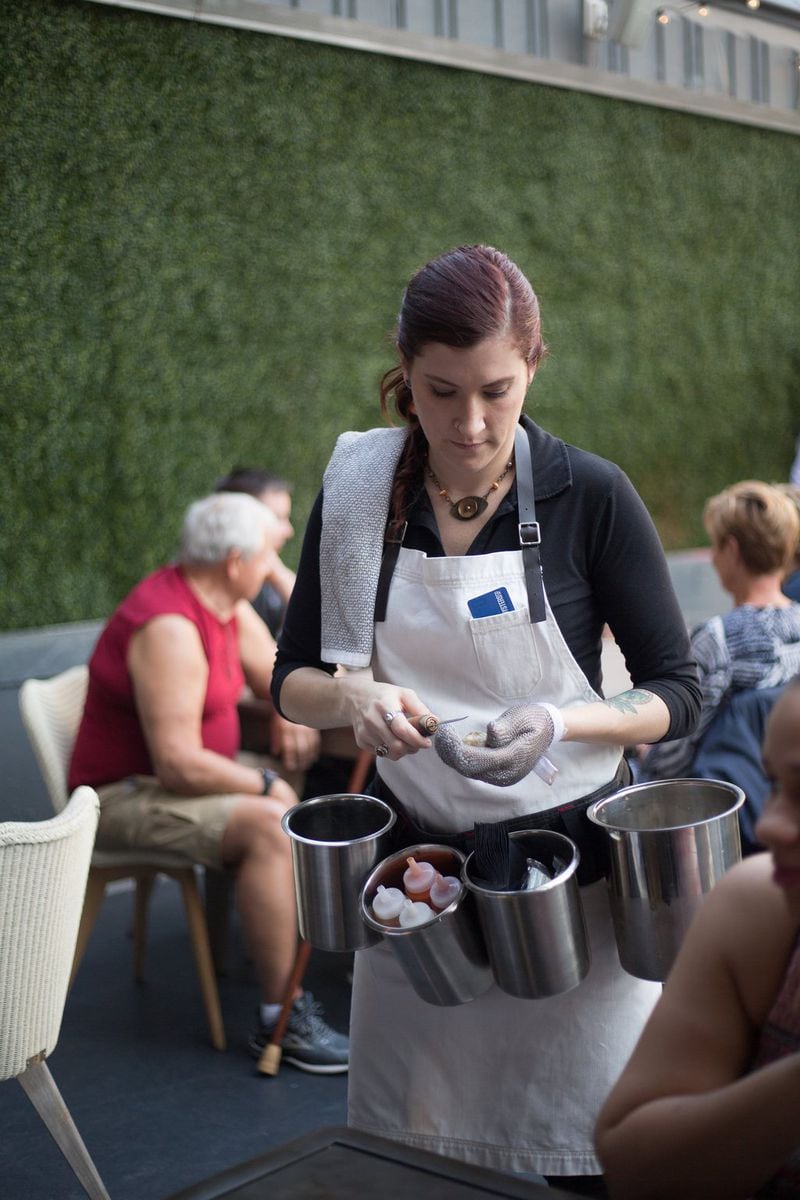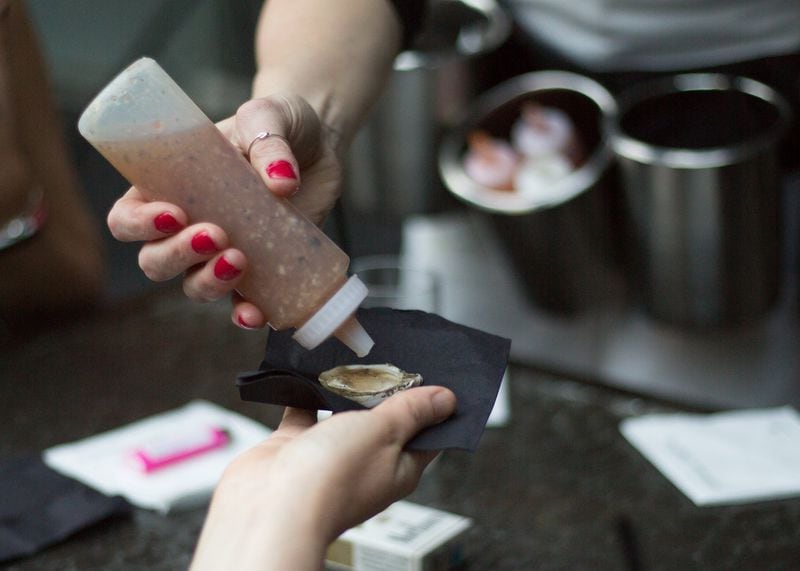When it comes to eating oysters, the first decision typically boils down to a simple dichotomy — raw or cooked?
While you’ll find advocates on both sides, with passions heating up like the flames on a charcoal grill, the raw evangelists make a simple argument: There’s nothing like the purity of a raw oyster served unadorned.
Shuckers — such as Kimball House in Decatur and Oysters Co in Atlanta — stake their reputation on the raw, but are also happy to spread the oyster gospel in cooked form. At heart, they aim to serve whatever turns their oyster eaters into briny happy people.
Bryan Rackley, co-owner of Kimball House and co-founder of nonprofit Oyster South, considers himself a kind of middleman between oyster farmers and eaters.
“I’ll eat them raw, fried, grilled, steamed, marinated, stewed … you name it,” he said. “But our intentions are for them to be mainly experienced raw, which for me is the best way to eat oysters.”
Rackley thinks of grilled oysters as “a possible gateway into raw.”
“Utilizing them in diverse ways also gives me the freedom to buy more,” he said. “And the more oysters I can get on the tables, the easier it is for the farmers we work with to get food on their own tables.”
Rackley also mentions that the farmers, especially those on the Gulf, sometimes have oysters that are simply better suited for the grill than the raw bar.
“Most of the farmers we work with are growing for the raw bar,” he said. “But Gulf oysters grow really fast, and the farmers often experience lease closures.” Such closures are imposed by the government and can prevent farmers from harvesting at the desired time.
When oysters grow larger than what the farmer or restaurant deems ideal for a raw bar, the grill (or the steamer or the fryer) offers a better alternative.
Christopher Murphy, owner and chef at Oysters Co, also makes a point of providing both raw and cooked options.
“We do larger parties,” he said, “and you inevitably have people who don’t eat oysters at all. Some try the grilled and then graduate to raw for the first time. Others see our servers charming guests (Oysters Co has shuckers who mingle with the crowd), and we can get them to try what I call a beginner oyster, like a Kumamoto or a Beausoleil, which are a bit less briny and have a cleaner taste profile.”
Murphy also uses the grill as a creative outlet, bringing in flavors such as chipotle bourbon or elote with queso blanco to complement the oysters. “We usually do at least three flavors of grilled oysters, and even raw oyster connoisseurs will try them. If someone loves raw oysters and is throwing a party, it’s nice for them to be able to offer the grilled oysters for those who are more comfortable with that.”
And what of the proper way to eat a raw oyster, for those who have made the leap?
Again, both Rackley and Murphy understand the delicate balance of putting the customer first and respecting the oyster. (Both also grew up surrounded by family piling Gulf oysters atop saltines with plentiful cocktail sauce and horseradish).
At Kimball House, they simply provide fresh lemon and a dropper of housemade mignonette. Cocktail sauce and hot sauce are available, but only appear when the diner requests them. “We’d rather people eat oysters with sauce than not at all,” Rackley said.
Saltines, though? No. That’s a bridge too far for Rackley. And once you get him going on the purity of the raw oyster experience, it is easy to see why a saltine might ruin the mood.
“Oysters are a really engaging food, and also insanely sensual. What other food gets positioned in front of a guest with no additional preparation? Built-in salinity gives oysters an unfair advantage, but you could eat an oyster that presents sweetness, sourness, bitterness and umami all in the same bite … and that’s without putting anything on it!”
But wait, there’s more. “Eating raw oysters opens your senses up and prepares you for a joyride, and they can also take you on a nostalgic odyssey,” Rackley said. “Seriously. Close your eyes and eat one.”
Rackley calls to mind one specific oyster outing. “I had these really vivid memories of eating oysters with my dad. So one minute I’m in a bar having beers and waiting on a dozen raw, and the next minute I want to call my old man and tell him I love him.”
That is the power of the oyster — raw or cooked, nude or coated in cocktail sauce. Whatever it takes.
About the Author









